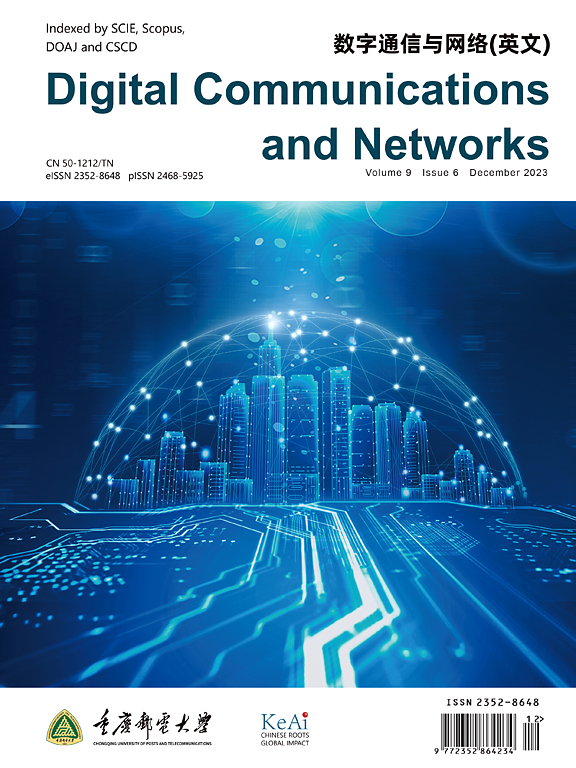Hierarchical flow learning for low-light image enhancement
IF 7.5
2区 计算机科学
Q1 TELECOMMUNICATIONS
引用次数: 0
Abstract
Low-light images often have defects such as low visibility, low contrast, high noise, and high color distortion compared with well-exposed images. If the low-light region of an image is enhanced directly, the noise will inevitably blur the whole image. Besides, according to the retina-and-cortex (retinex) theory of color vision, the reflectivity of different image regions may differ, limiting the enhancement performance of applying uniform operations to the entire image. Therefore, we design a Hierarchical Flow Learning (HFL) framework, which consists of a Hierarchical Image Network (HIN) and a normalized invertible Flow Learning Network (FLN). HIN can extract hierarchical structural features from low-light images, while FLN maps the distribution of normally exposed images to a Gaussian distribution using the learned hierarchical features of low-light images. In subsequent testing, the reversibility of FLN allows inferring and obtaining enhanced low-light images. Specifically, the HIN extracts as much image information as possible from three scales, local, regional, and global, using a Triple-branch Hierarchical Fusion Module (THFM) and a Dual-Dconv Cross Fusion Module (DCFM). The THFM aggregates regional and global features to enhance the overall brightness and quality of low-light images by perceiving and extracting more structure information, whereas the DCFM uses the properties of the activation function and local features to enhance images at the pixel-level to reduce noise and improve contrast. In addition, in this paper, the model was trained using a negative log-likelihood loss function. Qualitative and quantitative experimental results demonstrate that our HFL can better handle many quality degradation types in low-light images compared with state-of-the-art solutions. The HFL model enhances low-light images with better visibility, less noise, and improved contrast, suitable for practical scenarios such as autonomous driving, medical imaging, and nighttime surveillance. Outperforming them by PSNR = 27.26 dB, SSIM = 0.93, and LPIPS = 0.10 on benchmark dataset LOL-v1. The source code of HFL is available at https://github.com/Smile-QT/HFL-for-LIE.
弱光图像增强的分层流学习
与曝光良好的图像相比,弱光图像通常具有低可见度、低对比度、高噪声和高色彩失真等缺陷。如果直接对图像的弱光区域进行增强,则噪声不可避免地会使整个图像模糊。此外,根据彩色视觉的视网膜和皮层理论,不同图像区域的反射率可能不同,限制了对整个图像进行统一操作的增强效果。因此,我们设计了一个层次图像网络(HIN)和归一化可逆流学习网络(FLN)组成的层次化流学习(HFL)框架。HIN可以从弱光图像中提取层次结构特征,FLN利用学习到的弱光图像层次特征将正常曝光图像的分布映射到高斯分布。在随后的测试中,FLN的可逆性允许推断和获得增强的低光图像。具体来说,HIN使用三分支分层融合模块(THFM)和双dconv交叉融合模块(DCFM)从局部、区域和全局三个尺度提取尽可能多的图像信息。THFM利用区域特征和全局特征的聚合,通过感知和提取更多的结构信息来增强低光图像的整体亮度和质量;DCFM利用激活函数和局部特征的特性,在像素级增强图像,降低噪声,提高对比度。此外,本文还使用负对数似然损失函数对模型进行了训练。定性和定量实验结果表明,与最先进的解决方案相比,我们的HFL可以更好地处理低光图像中的许多质量退化类型。HFL模型增强了低光图像,具有更好的可见度、更少的噪声和更高的对比度,适用于自动驾驶、医疗成像和夜间监视等实际场景。在基准数据集LOL-v1上,PSNR = 27.26 dB, SSIM = 0.93, LPIPS = 0.10优于它们。HFL的源代码可从https://github.com/Smile-QT/HFL-for-LIE获得。
本文章由计算机程序翻译,如有差异,请以英文原文为准。
求助全文
约1分钟内获得全文
求助全文
来源期刊

Digital Communications and Networks
Computer Science-Hardware and Architecture
CiteScore
12.80
自引率
5.10%
发文量
915
审稿时长
30 weeks
期刊介绍:
Digital Communications and Networks is a prestigious journal that emphasizes on communication systems and networks. We publish only top-notch original articles and authoritative reviews, which undergo rigorous peer-review. We are proud to announce that all our articles are fully Open Access and can be accessed on ScienceDirect. Our journal is recognized and indexed by eminent databases such as the Science Citation Index Expanded (SCIE) and Scopus.
In addition to regular articles, we may also consider exceptional conference papers that have been significantly expanded. Furthermore, we periodically release special issues that focus on specific aspects of the field.
In conclusion, Digital Communications and Networks is a leading journal that guarantees exceptional quality and accessibility for researchers and scholars in the field of communication systems and networks.
 求助内容:
求助内容: 应助结果提醒方式:
应助结果提醒方式:


